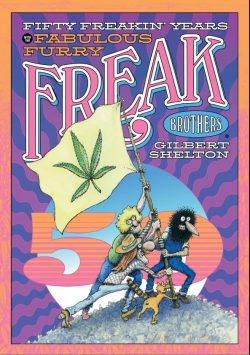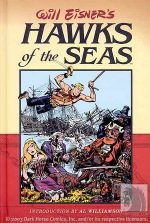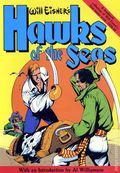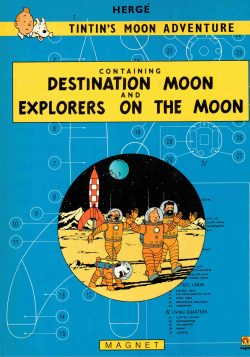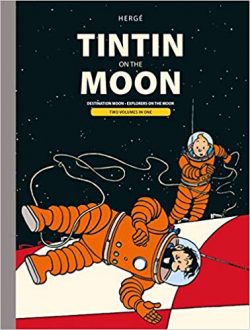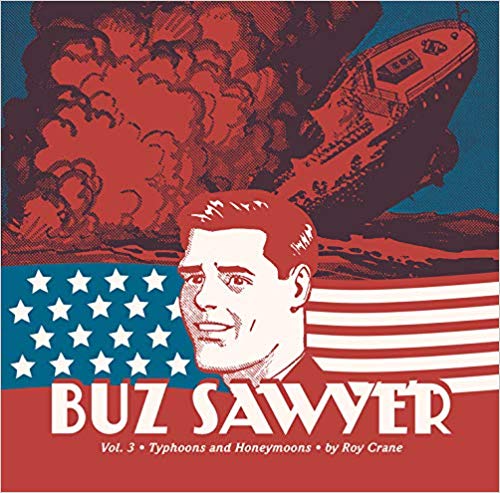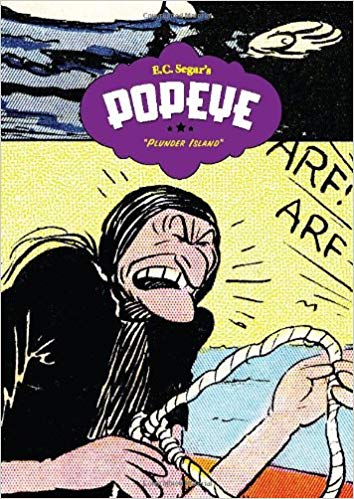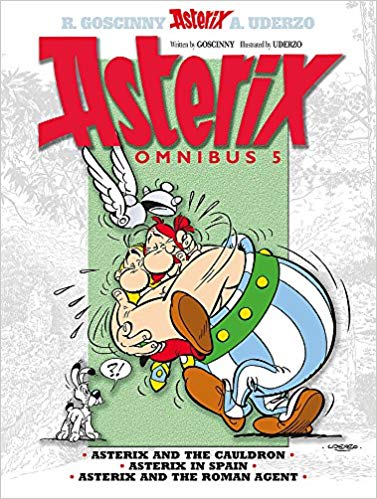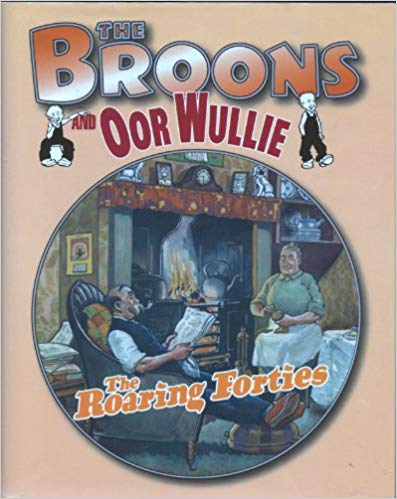
By R.D. Low & Dudley D. Watkins (DC Thomson)
ISBN: 978-0-85116-804-3 (HB)
The Broons is one of the longest running newspaper strips in British history, having run almost continuously in Scottish newspaper The Sunday Post since its delirious debut in the March 8th 1936 edition: the same issue which launched mischievous and equally unchanging wee laddie Oor Wullie.
Both the boisterous boy and the gregariously engaging working-class family were co-created by journalist, writer and editor Robert Duncan Low in conjunction with DC Thomson’s greatest artist Dudley D. Watkins. Moreover, once the strips began to be collected in reprint editions as Seasonal Annuals, those books became as much a Yule tradition as plum pudding or shortbread.
Low (1895-1980) began at DC Thomson as a journalist, rising to the post of Managing Editor of Children’s Publication and launching, between 1921 and 1933, the company’s “Big Five†story papers for boys: Adventure, The Rover, The Wizard, The Skipper and The Hotspur.
In 1936 his landmark notion was the “Fun Sectionâ€: an 8-page pull-out comic strip supplement for national newspaper The Sunday Post. This illustrated accessory launched on 8th March and from the outset The Broons and Oor Wullie were the headliners…
Low’s shrewdest notion was to devise both strips as comedies played out in the charismatic Scottish idiom and broad unforgettable vernacular where, supported by features such as Auchentogle by Chic Gordon, Allan Morley‘s Nero and Zero, Nosey Parker and other strips. These pioneering comics then laid the groundwork for the company’s next great leap.
After some devious devising in December 1937 Low launched the first DC Thomson weekly comic. The Dandy was followed by The Beano in 1938 and early-reading title The Magic Comic in 1939.
War-time paper shortages and rationing sadly curtailed the burgeoning strip periodical revolution, and it was 1953 before the next wave of cartoon caper picture paper releases. The Topper started the ball rolling again with Oor Wullie in the logo and masthead but not included in the magazine’s regular roster. In that same year Low & the magnificent Ken Reid created Roger the Dodger for The Beano…
Low’s greatest advantage in the early days was his prolific illustrator Dudley Dexter Watkins, whose style – more than any other – shaped the look and form of DC Thompson’s comics output, until the bombastic advent of Leo Baxendale shook things up in the mid-1950s.
Watkins (1907-1969) had started life in Manchester and Nottingham as an artistic prodigy before entering Glasgow College of Art in 1924. Before too long he was advised to get a job at expanding, Dundee-based DCT, where a 6-month trial illustrating prose boys’ stories led to comic strip specials and some original cartoon creations.
Percy Vere and His Trying Tricks and Wandering Willie, The Wily Explorer made him a dead cert for both lead strips in the Sunday Post‘s new Fun Section. Without missing a beat, Watkins quickly added The Dandy‘s Desperate Dan to his weekly workload in 1937, and The Beano‘s placidly outrageous Lord Snooty seven months later.
Watkins soldiered on in unassailable triumph for decades, drawing some of the most lavishly lifelike and winningly hilarious strips in comics history. He died at his drawing board on August 20th 1969.
For every week of all those astonishingly productive years, he had unflaggingly crafted a full captivating page each of Oor Wullie and The Broons, and his loss was a colossal blow to the company.
DC Thomson reprinted old episodes of both strips in the newspaper and the Annuals for seven years before a replacement was agreed upon, whilst The Dandy reran Watkins’ Desperate Dan stories for twice that length of time.
An undeniable, rock-solid facet of Scots popular culture from the start, the first Broons Annual (technically Bi-Annual due to wartime paper rationing) had appeared in 1939, alternating with Oor Wullie – although, due to those same resource restrictions, no annuals were published between 1943 and 1946 – and for millions of readers a year cannot truly end without them.
So What’s the Set Up?: the multigenerational Broon family inhabit a tenement flat at 10 Glebe Street, in the timelessly metafictional Scottish industrial everytown of Auchentogle (sometimes Auchenshoogle); based in large part on the working class Glasgow district of Auchenshuggle. As such, it’s an ideal setting in which to tell gags, relate events and fossilise the deepest and most reassuring cultural archetypes for sentimental Scots wherever in the world they might actually be residing.
As is always the case, the adamant, unswerving cornerstone of any family feature is long-suffering, understanding Maw, who puts up with cantankerous, cheap, know-it-all Paw, and a battalion of stay-at-home kids comprising hunky Joe, freakishly tall Hen (Henry), sturdy Daphne, pretty Maggie, brainy Horace, mischievous twins Eck and the unnamed “ither ane†plus a wee toddler referred to only as “The Bairnâ€.
Not officially in residence but always hanging around is gruffly patriarchal buffoon Granpaw – a comedic gadfly who spends more time at Glebe Street than his own quaint cottage, constantly seeking to impart decades of out-of-date, hard-earned experience to the kids… but do they listen…?
Offering regular breaks from the inner city turmoil and a chance to simultaneously sentimentalise, spoof and memorialise more traditional times, the family frequently repair to their But ‘n’ Ben (a dilapidated rustic cottage in the nearby Highlands): there to fall foul of the weather, the countryside and all its denizens: fish, fowl and farm-grown…
As previously stated, Oor Wullie also debuted on 8th March 1936 with his collected Christmas Annuals appearing in the even years.
The basic set-up is sublimely simply and eternally evergreen, featuring an imaginative, good-hearted scruff with a talent for finding trouble and no hope of ever avoiding parental retribution when appropriate…
Wullie – AKA William MacCallum – is an archetypal young rascal with time on his hands and can usually be found sitting on an upturned bucket at the start and finish of his page-a-week exploits.
His regular cast includes Ma and Pa, long-suffering local bobby P.C. Murdoch, assorted teachers and other interfering adults who either lavish gifts or inflict opprobrium upon the little pest and his pals Fat Bob, Soapy Joe Soutar, Wee Eck and others…
The Roaring Forties was released in 2002 as part of a concerted drive to keep earlier material available to fans: a lavish hardback compilation (sadly not yet available digitally) which proffers a tantalising selection of strips from 1940-1949, covering every aspect of contemporary existence except a rather obvious one.
Although for half the book World War II was a brutal fact of life, it barely encroached upon the characters’ lives except perhaps in the unexplained occasional shortages of toys, sweets and other scrummy comestibles…
The parade of celtic mirth begins with – and is regularly broken up by – a number of atmospheric photo-features such as a celebration of film stars of the period in ‘A Nicht at the Picters’ (in three glamour-studded showings) and ‘Cartoon Capers’, which reproduces a wealth of one-off gag panels from The Sunday Post by such luminaries as Carmichael, Eric Cook, Campbell and Housley, whilst ‘Whit’s in The Sunday Post Today?’ gathers a selection of the era’s daftest news items.
The endless escapades of the strip stars comprise the usual subject-matter: gleeful goofs, family frolics and gloriously slapstick shenanigans. Whether it’s a visit with family or just trying to keep pace with the wee terror, highlights include plumbing disasters, fireplace fiascos, food foolishness, dating dilemmas, appliance atrocities, fashion freak-outs, exercise exploits and childish pranks by young and old alike…
Punctuated by editorial extras, such as ‘Correction Corner’ – offering an intriguing look into the strips’ creative process – and ‘Dinnae Mention the War’ which reprints a selection of morale-boosting ads and items, are rib-tickling scenes of sledding and skating, stolen candies, torn clothes, recycled comics, visiting circuses, practical jokes, and social gaffes: stories intended to take the nation’s collective mind off troubles abroad, and for every thwarted romance of poor Daphne and Maggie or embarrassing fiasco focussed on Paw’s cussedness, there’s an uproarious chase, riotous squabble and no-tears scrap for the little ‘uns.
With snobs to deflate, bullies to crush, duels to fight, chips to scoff, games to win and rowdy animals (from cats to cows) to avoid at all costs, the timeless gentle humour and gently self-deprecating, inclusive fun and frolics make these superbly crafted strips an endlessly entertaining serving of superbly nostalgic an unmissable treat.
So why not return to a time of local blacksmiths and coalmen, best china and full employment, neighbours you knew by first names and trousers that always fell apart or were chewed by goats? There are even occasional crossovers to marvel at here, with Wullie and Granpaw Broon striving to outdo each other in the adorable reprobate stakes…
Packed with all-ages fun, rambunctious slapstick hilarity and comfortably domestic warmth, these unchanging examples of happy certainty and convivial celebration of a mythic lost life and time are a sure cure for post-modern glums…
© D.C. Thomson & Co., Ltd. 2002.



